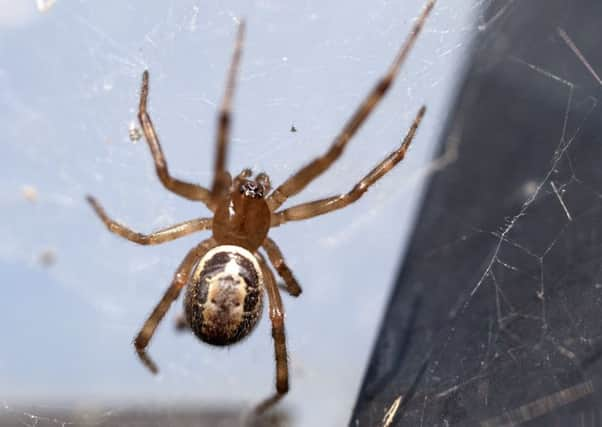Black widow spider relatives’ arrival in Scotland is ‘probably’ welcome


The false widow spider, a native of Madeira and the Canary Islands, arrived in the south of England more than 100 years ago, and it rapidly spread in the climatically favourable areas along the southern coast and the Thames valley. By the 1980s, there were flourishing populations in several locations in the south. But, despite steadily increasing temperatures throughout the century, there was no indication that the species would move northwards.
All this changed at the beginning of the new millennium – and because this essentially harmless spider had by then acquired its ominous popular name (as a close relative and vague look-alike of the notorious black widow spider) we can follow subsequent events in greater detail than for most other newly arriving bugs.
Advertisement
Hide AdAdvertisement
Hide AdWidespread news coverage created sufficient public interest to make sure that many new appearances of the false widow were duly reported to members of the British Arachnological Society, who entered these observations into their unique database of spider distribution patterns.
And the emerging pattern was surprising: suddenly, Steatoda nobilis was expanding from its established locations, moving north on average at least 11 kilometres per year.
This expansion did not slow down following the very cold winter of 2010, and it even seems to have accelerated since then. At the same time, new populations were unexpectedly observed around the world, in California, Chile, Colombia, Ecuador, Italy, Germany.
This raises the possibility that the species has undergone a genetic change, acquiring a new ability to expand into new environmental niches. This mechanism has been clearly shown for other spider species, but for the false widow it remains a hypothesis until we have been able to characterise the genetic make-up and physiology of different populations around the world.
For the time being, we have limited our analyses to predicting where Steatoda nobilis might occur next, so that the interested public and professional arachnologist can watch out for new arrivals.
Our computer models, based on the current distribution, show that suitable false widow habitat might be quite restricted, limited to relatively small areas of South America, South Africa, New Zealand and southern Australia.
We also predicted that the species would be likely to spread to northwest France, and indeed could confirm an established population in Normandy.
Is the new arrival of false widows in Scotland something to be worried about? There is currently no reason to expect that these spiders will cause medical problems more serious than a bee or wasp sting.
Advertisement
Hide AdAdvertisement
Hide AdThis is a shy and retiring species, and large populations can live unnoticed next to human habitation for a very long time.
In Britain, they should probably be seen as a welcome addition to local biodiversity, at least once their human neighbours have become accustomed to their presence and exercise due diligence, as they would do with other biting or stinging bugs.
The situation might be different in countries that have larger areas of untouched habitat and undisturbed ecosystems.
Here, Steatoda nobilis could cause trouble for native wildlife. The degree to which this would happen is difficult to predict, and the false widow could just as well integrate in the existing communities without causing any disruption.
If it does cause trouble, the most likely species to suffer would be closely related native spiders, which might be outcompeted by the more robust new arrival.
Rainer Breitling is professor of systems biology at Manchester University
